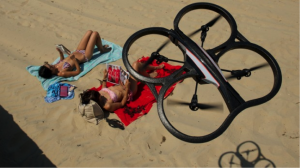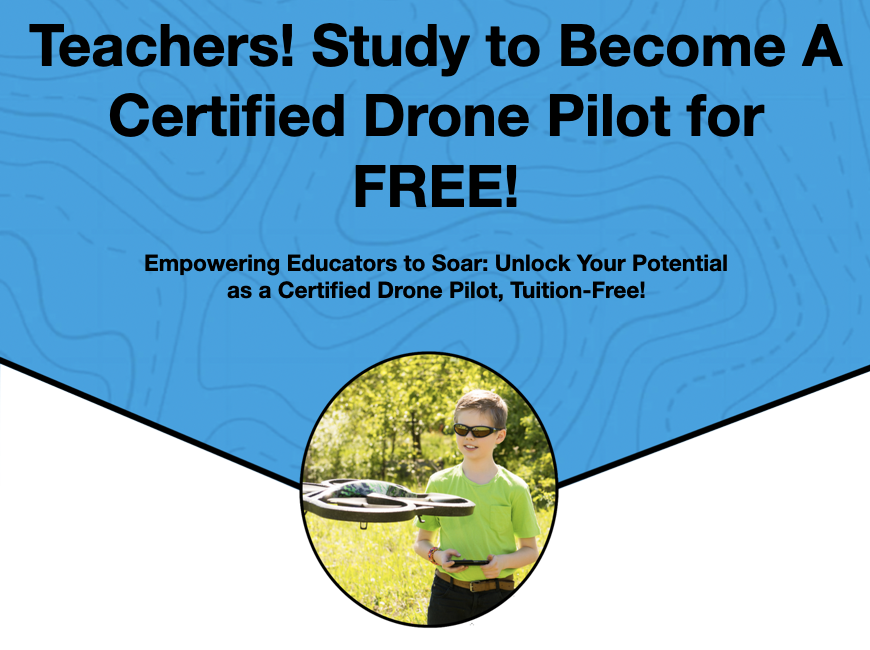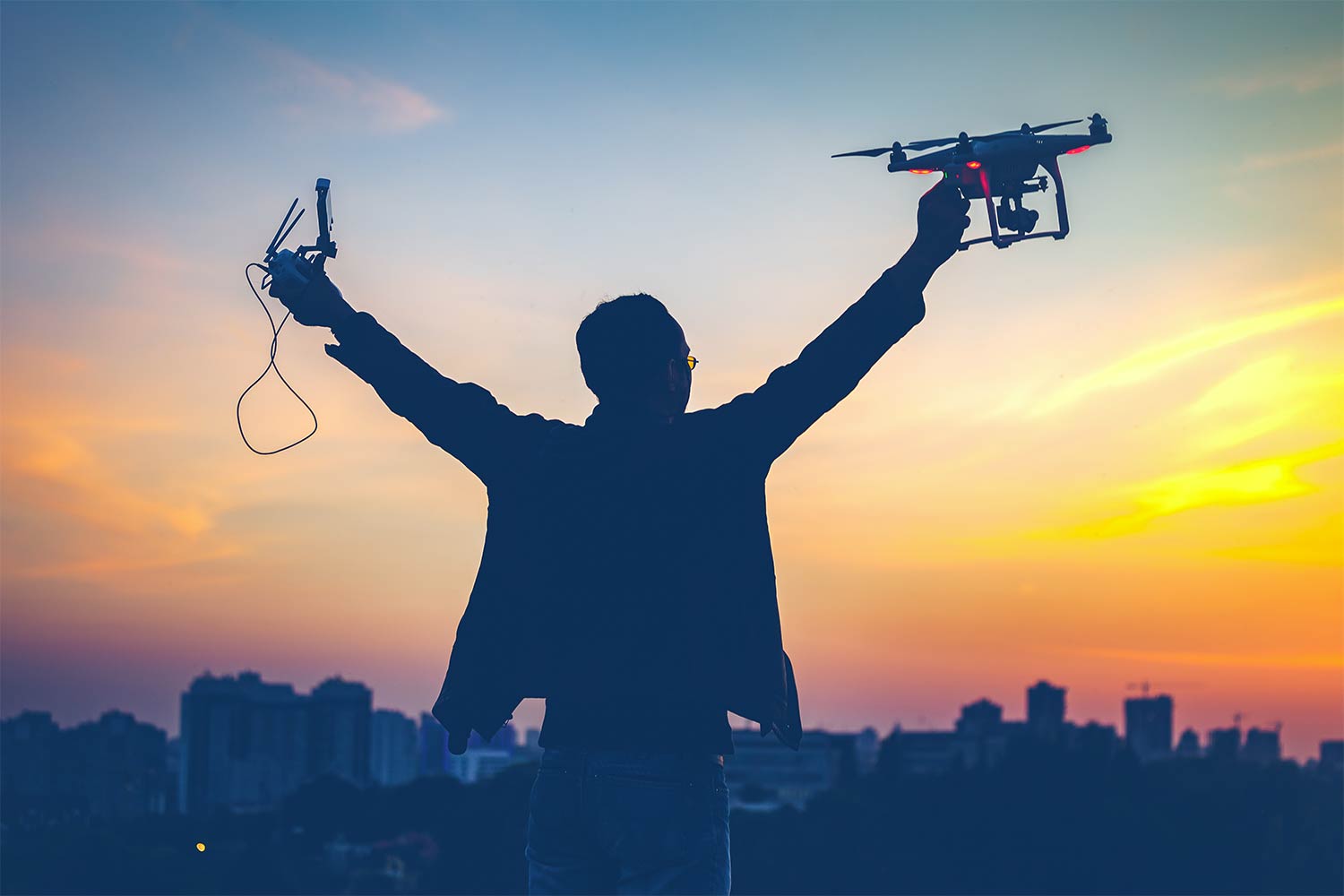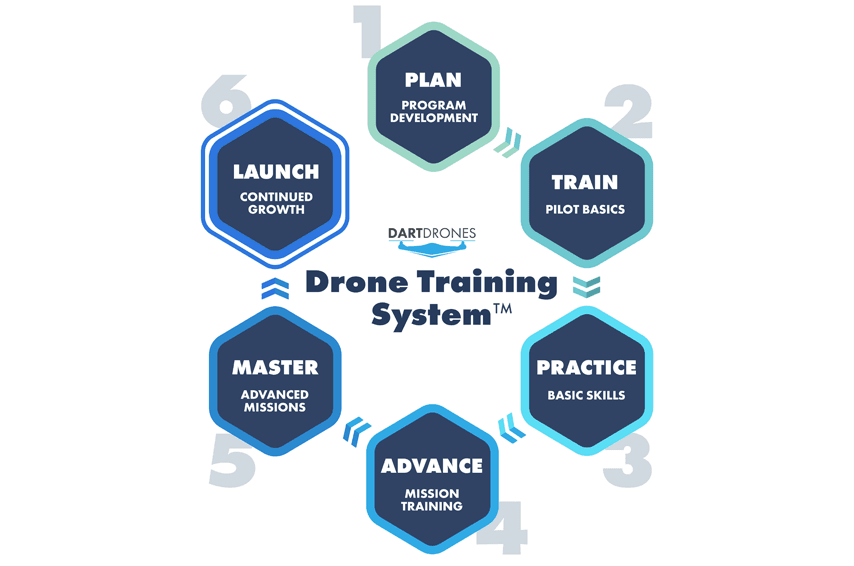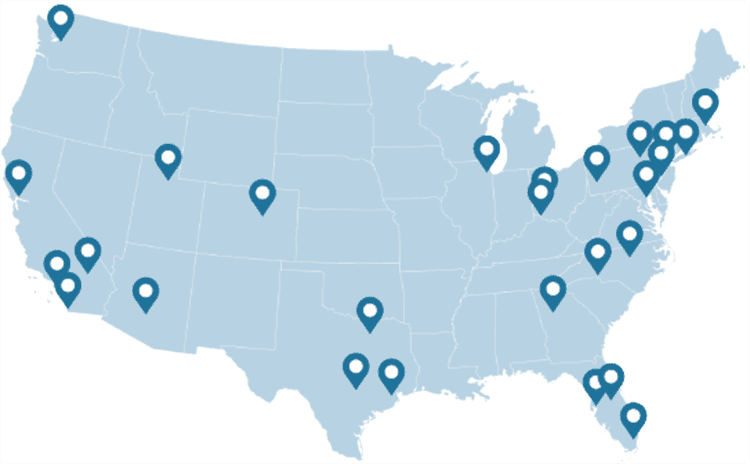
Know the Drone Rules – 12 Things Not to Do With Your New Drone this Holiday Season
Ah, the holiday season is upon us. It’s a time for family, friends, twinkle lights, and….drones? Yes, you read that right. According to the FAA, about a million people can expect to unwrap a brand spanking new UAV (Unmanned Aerial Vehicle) for Christmas — and officials are worried. Many of the people who are buying (or receiving) drones don’t know the drone rules and how to operate them safely. Besides the potentially deadly consequences of ignoring FAA guidelines, there are a number of other ways unskilled and irresponsible pilots have already proved UAVs can be dangerous in the wrong hands. Follow these 12 drone rules for flying drones to ensure safe flights this holiday season.
1. Don’t Ignore FAA Guidelines
So far, the FAA has been pretty relaxed when it comes to guidelines for model aircraft. They have seven, fairly simple and straightforward drone rules:
- Fly below 400 feet and remain clear of surrounding obstacles.
- Keep the aircraft within visual line of sight at all times.
- Remain well clear of and do not interfere with manned aircraft operations.
- Don’t fly within 5 miles of an airport unless you contact the airport and control tower before flying.
- Don’t fly near people or stadiums.
- Don’t fly an aircraft that weighs more than 55 lbs.
- Don’t be careless or reckless with your unmanned aircraft – you could be fined for endangering people or other aircraft.
However, with the increasing number of incidents involving UAVs, the FAA is looking to push through a registration system for unmanned aircraft by the end of December in order to keep up with the growing number of drone pilots. Speaking of registration, another thing to avoid is paying a third party company to register for you. Registration will be easy and cost nothing, so there’s no reason to fork out your hard earned money to have some scammer do it for you.
2. Don’t Interfere With Fire and Rescue
While many refuse to admit to doing so, humans love to rubberneck. We slow down as we pass car accidents on the freeway, we watch in horror as houses burn down, we follow along in anticipation as news crews follow a car chase. We just can’t seem to help ourselves.
However, some UAV pilots have taken this morbid curiosity a little too far — they’ve interfered with emergency professionals. In April of 2014, Kele Stanley of Springfield, Ohio was arrested after his drone interfered with a medical helicopter trying to reach the scene of a car accident. A few months later, Remy Castro and Wilkins Mendoza were both arrested when their drones caused a NYPD helicopter to swerve to avoid collision. And just this past July, tankers battling a California wildfire were grounded after drones were seen hovering over the blaze — directly affecting the length of time it took to put out the fire.
As a responsible UAV pilot (and citizen), it’s absolutely imperative to fully understand drone rules and let fire and rescue do their jobs without having to worry about a potentially deadly collision with a UAV.
3. Don’t Try to Get a Closer Look at the White House
Out of state visitors may not know this, but Washington D.C. is a “no drone zone”. The airspace around Washington, D.C. is considered “national defense airspace” and aircraft operations are limited to those with FAA and Transportation Security Administration authorization. Of course this hasn’t stopped a number of drone pilots from crashing on the White House lawn, but unless you want to face some heavy fines or jail time, you should probably avoid following their example.
4. Don’t Hover Too Close to Politicians
In September of 2013, members of the German Pirate Party flew a drone within a mere few feet of Chancellor Angela Merkel during a campaign event in Dresden. While the goal was to remind Chancellor Merkel of the opposition’s disapproval of potential drone observation policies, the ultimate result was the arrest of the pilot and an uptick in public fear regarding UAVs.
We live in a world where terrorist attacks (both foreign and domestic) are becoming an all too familiar occurrence. Incidents like the one in Germany instill a fear of weaponized UAVs being flown into crowded events — and we’re not talking about the military drones that already exist, we’re talking hobby sized UAVs that have had light explosive devices attached to them. Whether or not this is even feasible doesn’t matter, what matters is public perception.
If you’re angry with current or potential political policy, write a letter to your senator or take part in a peaceful protest — don’t scare the public by flying your drone into a politician’s face.
Image ©Jason South
5. Don’t Pester the Public
The general public’s opinion of UAVs is mixed. Some find them to be awesome pieces of technology while others consider them a menace. Much of the controversy surrounding drones has to do with their perceived ability as a spying tool. However, cameras on even the highest end UAVs are equipped with an ultra wide angle lens — and have no ability to zoom. This makes for some pretty terrible spy photos.
However, as I mentioned in my last point, it’s not the facts that always matter, it’s the people’s perception. While you may just be out capturing some sweet aerial shots of the beach, someone else might consider your drone to be in the air for the express purpose of getting bikini photos. It’s true that there isn’t any expectation of privacy in public places, but it doesn’t mean you shouldn’t be respectful of others. Try to avoid overly crowded outdoor areas so as not to upset or annoy fellow members of your community. And for crying out loud, if someone doesn’t want to be filmed, don’t film them.
6. Don’t Harass Wildlife
People love animals. We keep them as pets, house them in zoos, and stalk them in the wild, capturing film and images that last for generations. However, photographing wild animals has proven to be dangerous, leading some pilots to use their drones to capture candids instead. While there’s nothing inherently wrong with that, one must be mindful of the animals’ health and wellbeing.
In April of last year, volunteers at Zion National Park witnessed a drone separating several young bighorn sheep from the adults and scattering the rest of the herd. This past September, a Queensland resident spotted a UAV hovering near an osprey nest, forcing the parents away from it and their baby.
Even if you stay a respectable distance away from wildlife, you can still have a surprising impact. A recent study by wildlife ecologist Mark Ditmer found that overhead flights by drones caused a significant jump in the heart rate of wild bears — this despite the bears outwards signs of indifference.
Speaking of harassing animals…
7. Don’t Take Your Drone Hunting
It doesn’t happen often, but in the case of drones, animal rights activists and hunters are seeing eye to eye. Animal rights groups consider using drones to track animals as nothing short of remote-controlled killing, while hunting organizations regard the practice as unethical and unfair. Either way, it’s best to leave your drone at home when you head out on your next hunting trip.
In some states, it is illegal to use your drone as a tool for hunting. Alaska, Oregon, Colorado, Montana, Minnesota, Ohio, New York, and other states have recently enacted laws prohibiting the use of UAVs for hunting. To find your state’s hunting drone rules, click here
8. Don’t Fly In National Parks
Much like Washington D.C., the U.S. National Parks are a no drone zone. Thanks to incidents such as the one with the bighorn sheep in Zion National Park and another one in Yellowstone where a visitor crashed a drone into the Grand Prismatic Spring, rangers and ecologists both have had enough of irresponsible drone pilots throwing caution and common sense to the wind.
9. Don’t Pilot Your Drone Indoors
Flying a drone outdoors can be tricky. Flying one indoors can result in some unfortunate injuries. During a Christmas promotion at TGI Friday’s last year, a mistletoe bearing drone lost control and clipped a news photographer in the nose with one of its blades. Georgine Benvenuto lost a small chunk of her nose and was cut under the chin, but luckily the injuries were minor.
Unfortunately the drone operator refused to accept blame and instead passed it on to a reporter at the scene, saying she flinched after he encouraged her to allow the 10-inch drone to land in her hand. It was this, he said, that caused the drone to careen into the face of the photographer.
The most important drone rules to take away from this are the following:
- Don’t fly drones indoors. Just don’t.
- Don’t encourage someone to touch an airborne drone with bare hands. Bad things can happen, just ask Enrique Iglesias…
10. Don’t Grab an Airborne Drone with Bare Hands
Enrique Iglesias probably won’t be making the mistake of grabbing a drone mid-flight again anytime soon. For his latest tour, the singer employed a drone to take pictures of the crowd during concerts, occasionally grabbing the craft and turning it on himself to get a point of view shot. Unfortunately in June, the stunt backfired, leaving Iglesias with multiple lacerations and a fracture that required reconstructive surgery.
Guys, drone blades may not seem very sharp upon first inspection, but they are traveling at an incredibly high speed when in motion. If you stick your fingers in the blades, you’re gonna have a bad time — that’s why they have guards around them.
11. Don’t Ruin Someone’s Wedding
Many professional photographers have embraced UAVs as the perfect tool to capture stunning aerial photos. Some have even introduced drones into the lucrative business of wedding photography, grabbing unique shots of newlyweds on their big day. Unfortunately for one happy couple, the photographer lost control of his drone and crashed into the groom, causing some minor facial lacerations.
Even the most experienced pilot has encountered mechanical failures. The last thing you want to do is ruin someone’s wedding by crashing into the cake, guests, or the newlyweds themselves. Oh, and a quick reminder: If you’re using your drone for commercial purposes, you will need to file for a Section 333 Exemption.
12. Don’t Try Your Hand at the Illegal Drug Trade
From Tijuana, Mexico to Baltimore, Maryland, it seems that smugglers are hell-bent on using drones to transport drugs. Whether they’re trying to get them over the border into the U.S., or over prison walls to inmates, they’re trying their damndest to bring drug smuggling into the 21st century by implementing UAVs as their newest means of conveyance. Unfortunately for them, it rarely goes off without a hitch, and they usually find themselves in the hands of law enforcement.
When you set out to fly your new drone for the first time this season, as long as you use common sense and stay on the right side of the law, you’ll find your newest toy will bring you hours of holiday joy.
Just keep your fingers away from the props.
As you can see, drones can become very dangerous and potentially life threatening. Drone pilots who are unaware of the FAA’s drone rules may incur fines or even jail time with what started off as a harmless hobby. DARTdrones wants to remind you to #FlySmart this holiday season and get #SantaCertified. Simply use the coupon code santacertified25 to receive $25 off a UAV Basic Training course. Keep yourself and your loved ones safe, and let’s together help promote a positive image for this fast growing industry.
Liz Greene is a dog loving, beard envying, pop culture geek from the beautiful city of trees, Boise, Idaho. You can catch up with her latest misadventures on Instant Lo or follow her on Twitter @LizVGreene.


